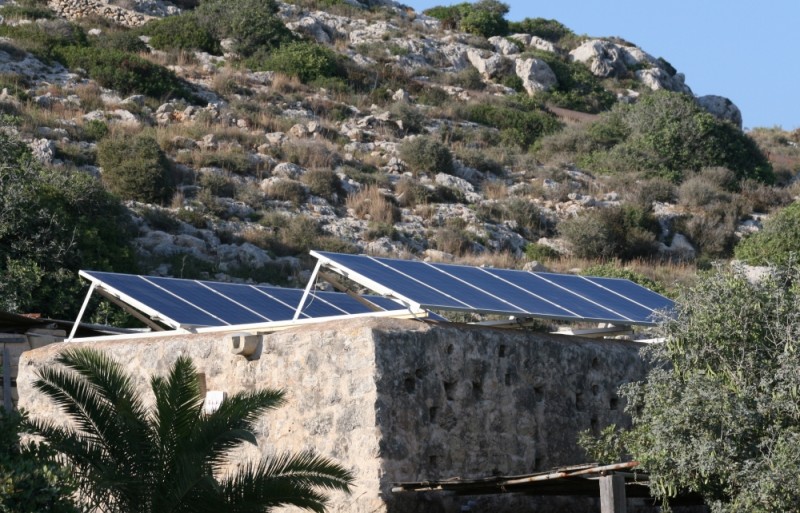Stand Alone PV Systems DC/AC
In an off grid system, also called stand-alone system, the system is completely isolated from the public distribution network and the generated energy is stored in deep cycle batteries. The output can be used to power dc loads as is typical for boats or caravans. With the use of an inverter, one would convert the DC energy from the batteries to AC power so normal household appliances can be used. With the present cost of energy, off-grid systems are today economically viable even for locations which are less than 1km away from the grid.
The design of an off grid system is more demanding than the grid tied, since the correct operation of all components needs to be ensured. A poor design usually results in prematurely exhausted batteries which would need to be replaced at a considerable cost.
The basic elements which constitute an Off -Grid PV system are:

- Solar panels. These are usually roof or ground mounted, and produce the electricity at a DC voltage. The panels are connected together to form an array depending on the system size. Panels are mounted on metal structures which are certified to withstand wind loads.
- Charge controller. This device regulates the flow of DC current which goes into the battery bank preventing overcharging which would reduce the batteries lifespan considerably.
- Batteries. For PV applications, deep cycle batteries are used which are significantly different from those used in automotives. The size of the batteries depends on the load and on the days of storage decided upon at the design stage.
- The inverter. In an off grid AC system, the inverter has the basic function of converting the DC energy from the batteries to AC energy so that normal appliances can be used. Usually, it is more economic to use this approach rather than do away with the inverter and use DC appliances. Replacement of DC appliances is usually problematic to find. This type of inverter provides protection against undervoltage operation.
- Connecting cables and switchgear. The above equipment has to be connected with the right type of cable to avoid degradation during its lifetime as a result of load currents or environmental exposure such as uv radiation. Protective devices are also installed to provide isolation and protection in the event of a fault.
Off grid systems are designed on a custom basis since every application is different. It usually starts with a discussion with the client to understand his load profile and expectations. This is followed by system design, installation and monitoring to ensure clients’ satisfaction.
